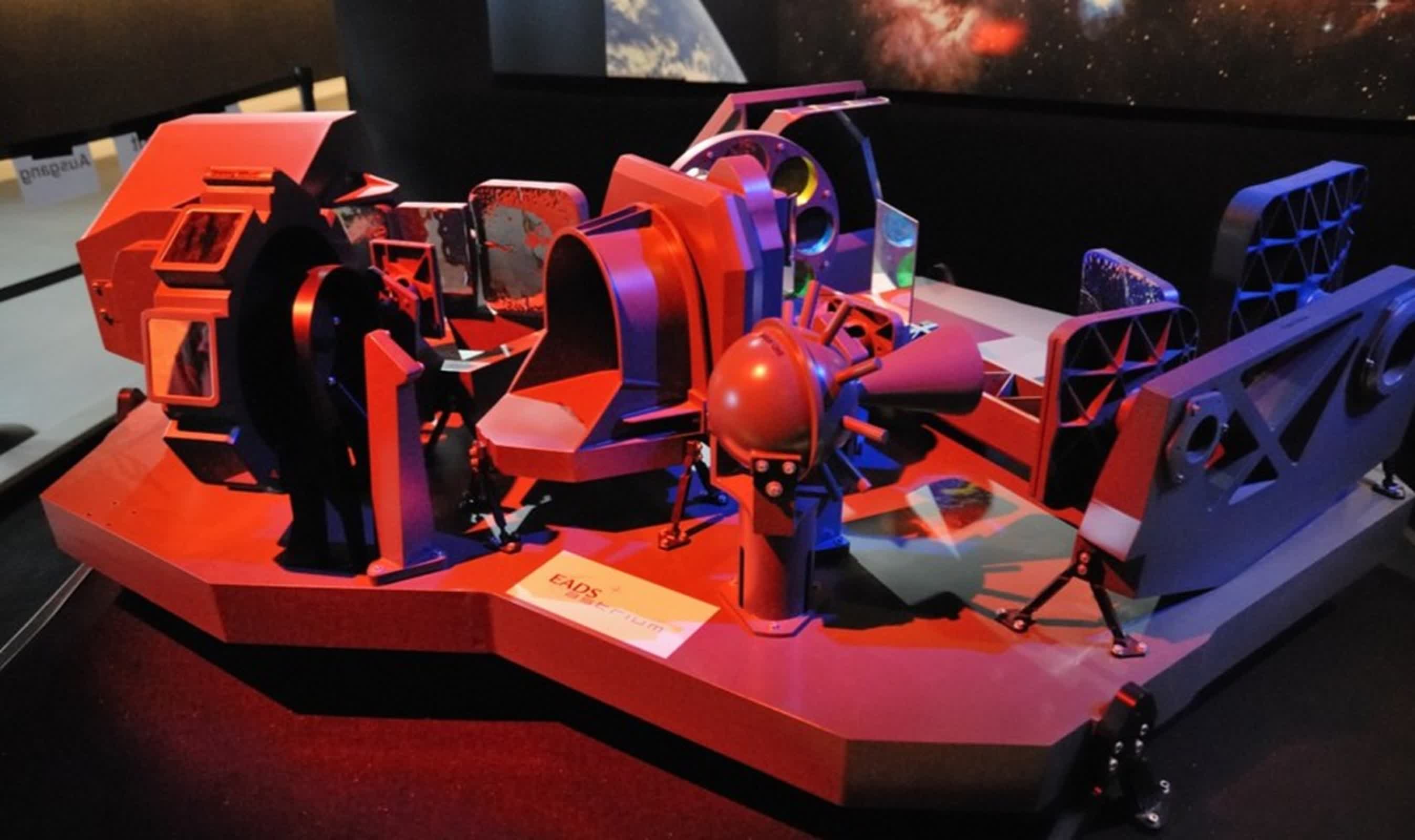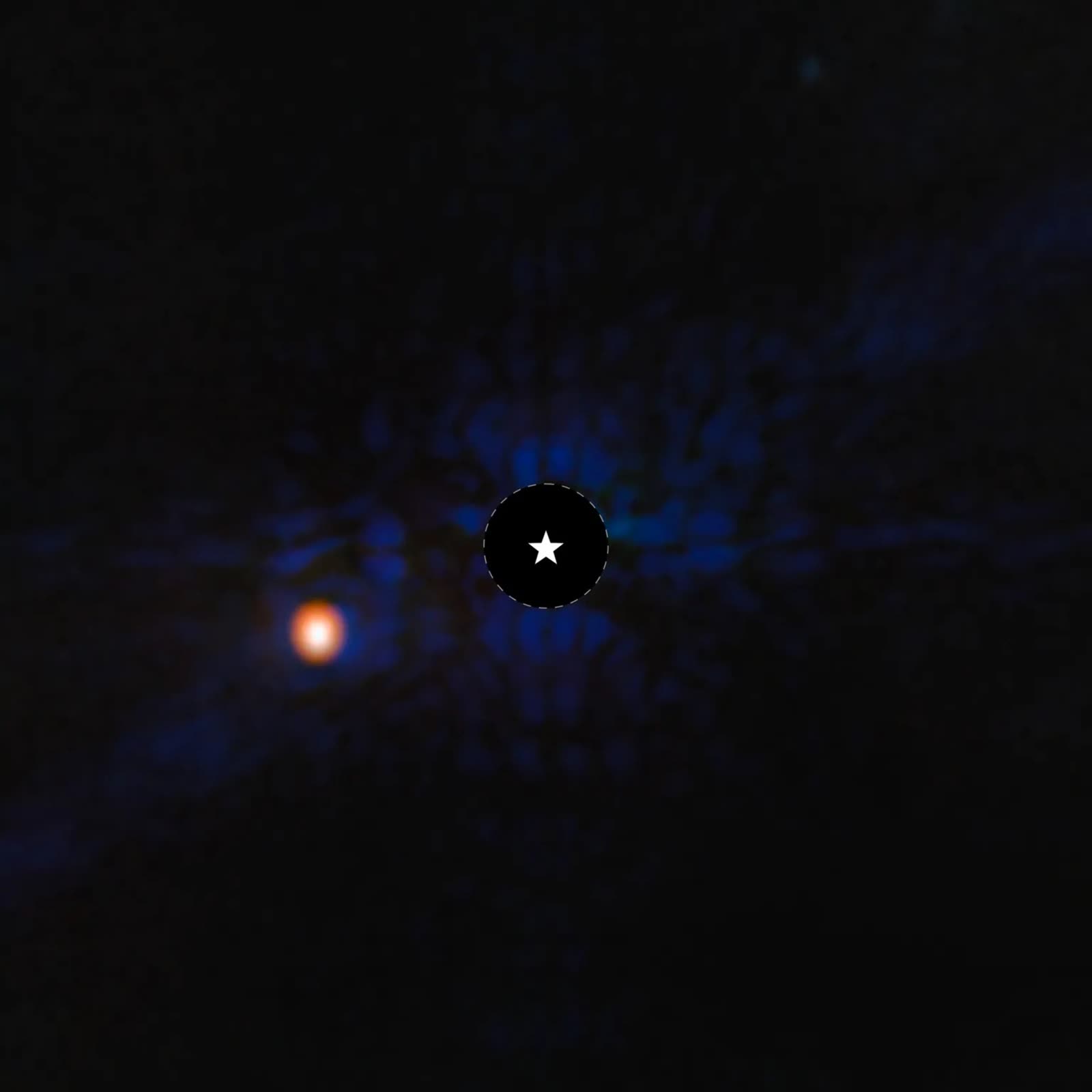The big picture: The James Webb Space Telescope has directly imaged Epsilon Indi Ab, an exoplanet about 12 light-years from Earth that orbits the star Epsilon Indi A. This gas giant is one of the coldest exoplanets ever directly observed, and the new imaging reveals a world significantly different from initial predictions. It's more massive, farther from its star, and has a longer orbital period than expected.
Epsilon Indi Ab, located approximately 12 light-years from Earth, is several times the mass of Jupiter and orbits the K-type star Epsilon Indi A, which is similar in age to our Sun but slightly cooler.
This discovery was made by an international team of astronomers using the coronagraph on NASA's James Webb Space Telescope's mid-infrared instrument (MIRI). It marked a significant development, as only a few exoplanets have been directly imaged before.
"Webb is ideally suited to conduct mid-infrared imaging, which is extremely hard to do from the ground," said lead author Elisabeth Matthews of the Max Planck Institute for Astronomy in Germany. "We also needed good spatial resolution to separate the planet and the star in our images, and the large Webb mirror is extremely helpful in this aspect."
"Astronomers have been imagining planets in this system for decades; fictional planets orbiting Epsilon Indi have been the sites of Star Trek episodes, novels, and video games like Halo," said team member Caroline Morley of the University of Texas.

The new imaging found that the team's initial predictions about Epsilon Indi Ab were largely incorrect, as they were based on indirect observations using the radial velocity method. This method had suggested the presence of a giant planet tugging on the star Epsilon Indi A, leading to predictions of a planet about three times the mass of Jupiter, orbiting its star at a distance that would complete an orbit roughly every 45 to 50 years.
However, the findings from the James Webb Space Telescope revealed a different world. The planet is warmer and more massive than Jupiter but is still one of the coldest exoplanets ever directly observed, with an estimated temperature of 35 degrees Fahrenheit (2 degrees Celsius), making it a challenge to detect using conventional methods.
Previously imaged exoplanets tend to be the youngest, hottest ones, still radiating much of the energy from when they first formed. As planets cool and contract over their lifetimes, they become significantly fainter and harder to image.
These findings raise new questions about the planet's formation and atmospheric composition. It is now speculated that the planet's atmosphere might contain significant amounts of methane, carbon monoxide, and carbon dioxide, potentially indicating a very cloudy atmosphere.
The team is planning future studies for Epsilon Indi Ab, including detailed photometric and spectroscopic observations to analyze the planet's atmospheric composition. They also aim to gather more data at different wavelengths, allowing for a more comprehensive understanding of the planet's properties and behavior over time.
"Astronomers have been imagining planets in this system for decades; fictional planets orbiting Epsilon Indi have been the sites of Star Trek episodes, novels, and video games like Halo," said team member Caroline Morley of the University of Texas at Austin. "It's exciting to actually see a planet there ourselves, and begin to measure its properties."
